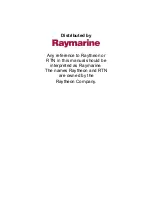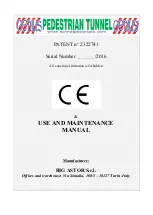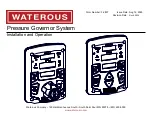
– 59 –
3. TIMER FUNCTIONS
Descriptions of Terms
Term
Description
Event
A single unit of operation performed by timer control. (Example: Morning broadcast
of radio exercise program.)
Pattern
A single unit into which multiple events are combined. A single pattern needs to be
set per day. Multiple patterns cannot be set for an individual day.
Start Time
A single unit into which multiple events are combined. A single pattern needs to be
set per day. Multiple patterns cannot be set for an individual day.
End Time
Time at which an event ends (hh/mm/ss).
Correction Time
Time duration (seconds) of negatively correcting the start time. Set this duration
when it is necessary to take into considerations the starting time of amplifiers or
other components connected to the input channel.
Repetition /
Number of Repetitions
The time interval (minutes) between repetitions of a single event /
The number of repetitions.
Classification
One of 3 types of event: Operation Control (including contact output),
Contact (output) and Audio Scene
Weekly Program
A pattern covering a week (Monday through Sunday). One single pattern is set in a
system
Yearly Program
A pattern covering a span of 2 years
Date Switching Time
Time at which a pattern changes. Default: 0:00 AM.
Audio Scene
A single unit into which the volume and sound quality parameters of all audio I/O
channels are combined. Up to 8 scenes can be saved in a system.
Overview of Functions
Using the timer function, Operation Control (including contact output), Contact
(output) and Audio Scene control can be enabled at designated times.
These controls are performed according to the PC’s System Manager clock.
The PC’s System Manager clock can be corrected by way of the NTP server or I/O
interface control input.
Event operation and contact output controls can be performed at designated times.
Audio scenes can also be changed.
Up to 64 patterns can be set. Up to 256 events can be registered per pattern.
Weekly programs can be set by assigning patterns for each day of the week. For
yearly programs, arbitrary patterns can also be set for individual days.
Patterns can be preregistered and operated for periods of up to 24 months including
the current month.
By setting the time at which the system’s date switches (Date switching time), the
timing of pattern switching can be set.
A single event can be continuously operated beyond the date switching time up to 48
hours in advance.
















































